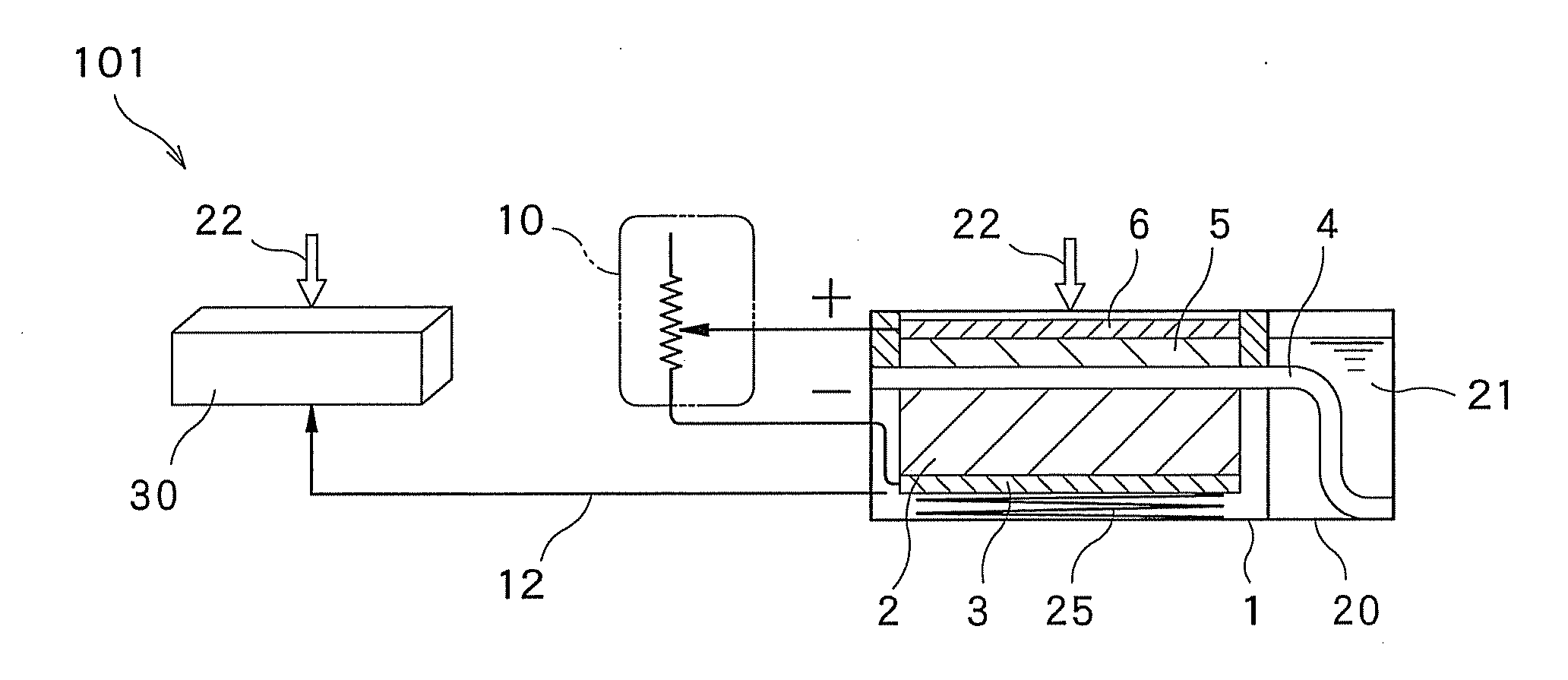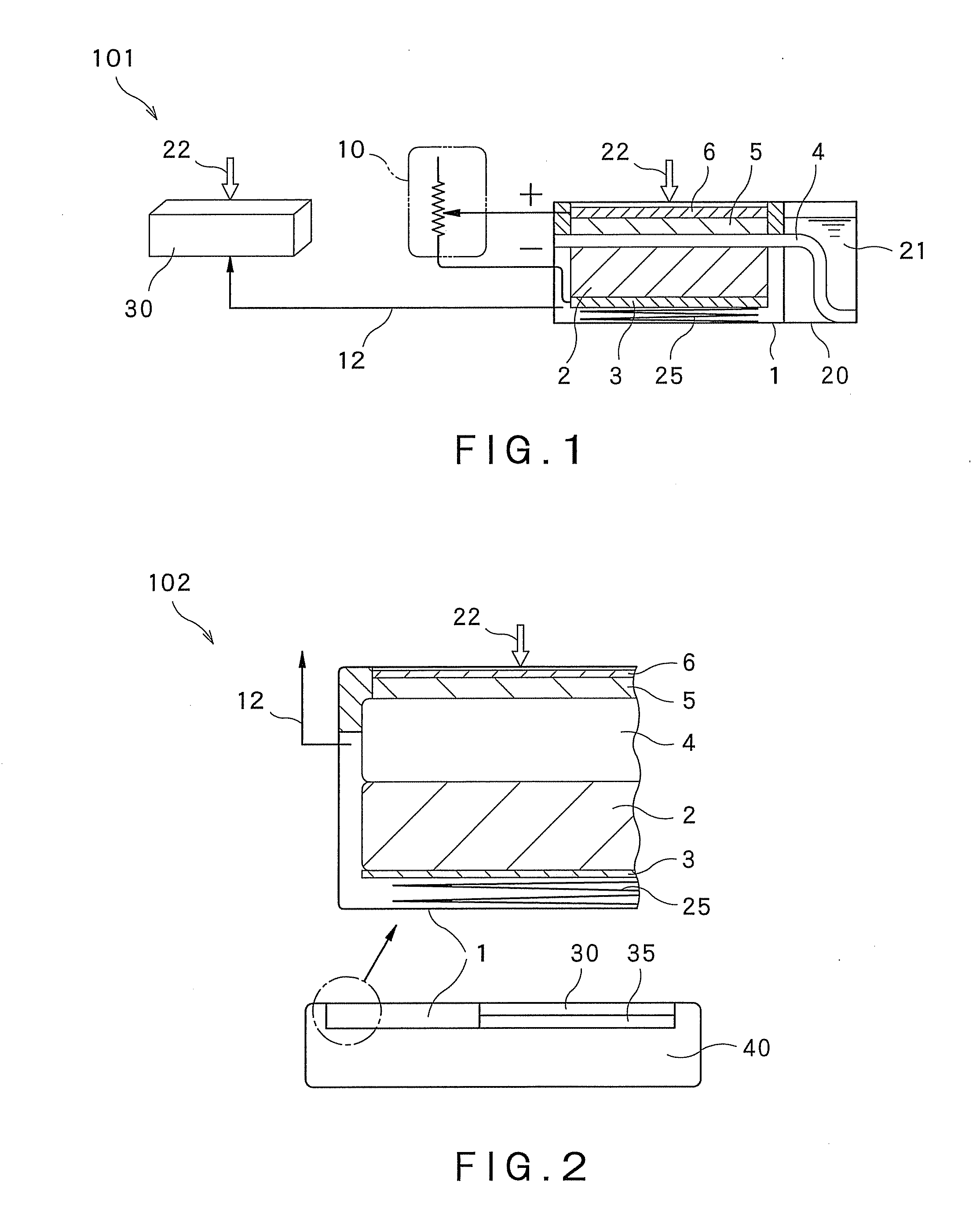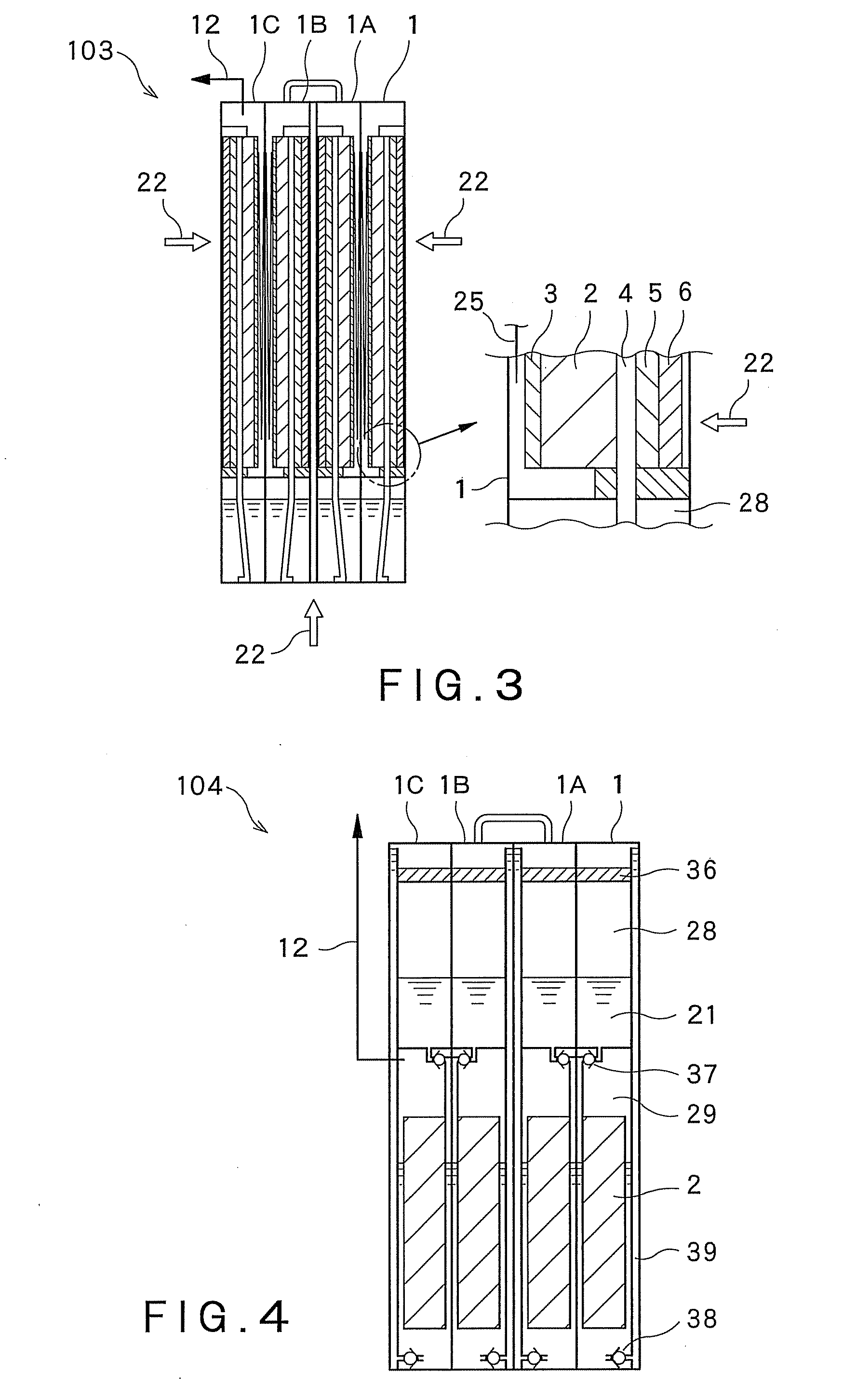Power generating apparatus
a power generation apparatus and power technology, applied in the direction of electrochemical generators, cell components, energy input, etc., can solve the problems of high temperature water heating of metal materials, large apparatus, heat damage, etc., to accelerate interfacial reaction, reduce polarization resistance, and prevent container explosion
- Summary
- Abstract
- Description
- Claims
- Application Information
AI Technical Summary
Benefits of technology
Problems solved by technology
Method used
Image
Examples
example 1
[0038]The step of reducing the particle size of a functional material, the step of hydrogenating the functional material, the step of forming a film, and the step of mounting the functional material will be described.
[0039]When the functional material is a hydrogen storage alloy, for example, calcium (Ca), lanthanum (La), magnesium (Mg), nickel (Ni), titanium (Ti), and third elements, for example, vanadium (V), are generally known as materials for the hydrogen storage alloy. These materials are mixed together, and the mixture is melted to produce cast hydrogen storage alloys such as La—Ni-base alloys and Mg—Ti-base alloys.
[0040]Hydrogen is occluded in these alloys, followed by initial pulverization or mechanical pulverization to produce a fine powder of a hydrogen storage material. An alternative method for producing a fine powder of a functional material is as follows. Particles of a metal or an alloy or particles of Mg are placed as a functional material in a pressure-resistant co...
example 2
[0050]Experimentation of hydrolysis and generation of electricity using magnesium (Mg) or magnesium hydride (MgH2) as a functional material will be described.
[0051]Experiments of a fastest self-propelled reaction of hydrolysis with aqueous solutions of naturally existing solutes were attempted. In the experiments, two types of samples were used. Sample 1: 1 g of magnesium (Mg) having a particle size of not less than 200 μm. Sample 2: 1 g of magnesium hydride (MgH2) having a particle size of not more than 50 μm.
[0052]Three types of aqueous solutions were used as the aqueous solution. Aqueous solution 1: water (H2O). Aqueous solution 2: an 8% aqueous citric acid (C6H8O7) solution. Aqueous solution 3: a 5% aqueous bittern (magnesium chloride hexahydrate MgCl2.6H2O) solution.
[0053]The experiment was started by pouring each 5 cc of the three types of aqueous solutions at room temperature (20° C.) to the samples in test tubes. When the self-propelled reaction rate is low, observation and ...
example 3
[0064]Embodiments of the present invention will be described with reference to FIGS. 1, 2 and 3. In FIG. 1, a positive electrode 6, a separator 4, and a negative electrode 3 with a functional material 2 mounted thereon are laminated to constitute a battery element and are provided within a hydrogen generating container 1. A lead wire from the electrode and a load device 10 are connected through an electric wire to pass an electric current, while the container 1 is connected and communicated with a hydrogen demanding unit 30 through a hydrogen pipe 12 to constitute the whole apparatus 101 of the present invention.
[0065]FIG. 2 shows an embodiment 102 that is a power supply unit which, in use, is usually carried. In this embodiment 102, a hydrogen generating container 1 is incorporated in a portable (cellular) phone 40. FIG. 3 shows an embodiment 103 which is a middle- to large-size apparatus in which the hydrogen generating containers 1 are stacked.
[0066]When the hydrogen generating c...
PUM
| Property | Measurement | Unit |
|---|---|---|
| particle size | aaaaa | aaaaa |
| particle size | aaaaa | aaaaa |
| temperature | aaaaa | aaaaa |
Abstract
Description
Claims
Application Information
 Login to View More
Login to View More - R&D
- Intellectual Property
- Life Sciences
- Materials
- Tech Scout
- Unparalleled Data Quality
- Higher Quality Content
- 60% Fewer Hallucinations
Browse by: Latest US Patents, China's latest patents, Technical Efficacy Thesaurus, Application Domain, Technology Topic, Popular Technical Reports.
© 2025 PatSnap. All rights reserved.Legal|Privacy policy|Modern Slavery Act Transparency Statement|Sitemap|About US| Contact US: help@patsnap.com



